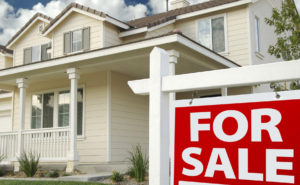 Florida housing outlook tops big-picture on the national scene
Florida housing outlook tops big-picture on the national scene
In its U.S. economic and housing market outlook for 2019, CoreLogic economists forecast growth in home prices to drop by one percentage point as higher interest rates impact the mortgage market, homeowners have an incentive to retain their current low-rate mortgages and new listings.
But Florida’s housing market is projected to do very well next year, market researcher and analyst Gord Collins wrote in his “Florida Housing Forecast 2019.” He reported that the Tampa/Sarasota housing market is “hot.”
Homes at two of the country’s top-selling master-planned communities prove that. Both Lakewood Ranch (No. 2) and West Villages (No. 5) surpassed 2017′s record sales marks weeks ago.
“The good news is that our inventories and pricing are staying in check, unlike other markets who are grappling with low inventories and mounting price pressures,” said Laura Cole, vice president of marketing for Lakewood Ranch developer Schroeder-Manatee Ranch.
West Villages President Paul Erhardt also expects demand to endure: “In parallel to Florida’s strong housing market, we continue to see increased traffic, buyer interest and sales across all of our communities within West Villages Florida,” he said.
In his latest residential real estate report, issued this week, Robert Goldman, a Michael Saunders & Co. Realtor and an attorney, stated that “Sarasota County has been on a tear” and “an unprecedented six-year run.”
Based on an analysis for Multiple Listing Service statistics for home sales in the county, the local and national economies, and his history in the market, Goldman forecast a continued stable and balanced housing market for the first three quarters of 2019 with inventory slowly growing and prices increasing in the 4 to 5 percent range.
“We are facing looming headwinds, but they will likely not surface until the end of 2019/2020,” he wrote.
In his prognostication, Collins also noted: “The housing market in Miami, Tampa, Orlando, Panama City, Sarasota, Naples, Fort Lauderdale, and even Boca Raton are compelling real estate investment value propositions for snowbirds and other buyers in North America.
“Interest in buying Florida properties is persistent, and given the strength of the Florida economy and tax situation in the Sunshine State, and an aging population, we should see strong prices for many years.”
In its “Pre-Mover Housing Index,” ATTOM Data Solutions, curator of a national multi-sourced property database, indicated the Tampa Bay area ranked sixth in loan applications from those ready to relocate.
In Florida, November marked 83 consecutive months — more than six and a half years — that statewide median sales prices for both single-family homes and condo-townhouse properties rose year-over-year.
“As we close out the year,” said Erica Plemmons, economist and director of housing statistics for Florida Realtors, “how has 2018 compared to 2017? Median sale price has continued its climb every month in 2018 versus the same month in 2017.”
In the Sarasota-Manatee market, the median home price ticked up 3.8 percent to $290,000 in the third quarter of this year.
Nationally, annual home price growth slid a bit in October to 5.48 from 5.52 percent in September, the seventh consecutive month of declines, according to S&P CoreLogic Case-Shiller Indices. The incremental decline began after March’s figure reached 6.53 percent.
In Wednesday’s new report, Ralph B. McLaughlin, deputy chief economist and executive of research and insights for CoreLogic, said, “It’s important to look at the bigger picture. Slowing price appreciation is still appreciation, and the current rate is more than double that of inflation.
“This continued growth, coupled with rising inventory and falling mortgage rates, suggests the bottom isn’t falling out of the housing market. Instead, the housing market is taking on a healthy diet that will allow it to be in better shape for the home buying season come spring.”
Impact of interest rates
CoreLogic’s December 2018 MarketPulse report, issued last week, stated that 30-year fixed mortgage rates will rise to an average of about 5.25 percent by next December, the highest in a decade.
“The larger monthly payments that come with higher mortgage rates will likely soften buyer demand, leading to less pressure on home prices,” wrote Frank Nothaft, chief economist at CoreLogic, a global property information and analytics company.
Aaron Terrazas, director of economic research for Zillow, predicts a higher mortgage rate coming next year — 5.8 percent — “territory not seen since the dark days of 2008 when rates were racing downward in response to the housing crisis.”
According to Freddie Mac, the interest rate for a 30-year fixed-rate mortgage averaged 4.87 percent in November, up from the 3.92 percent average during the same month a year earlier. For the week ending Dec. 27, the rate averaged 4.55 percent. During the same week in 2017, it was 3.99 percent, the lender reported Thursday.
For mortgage lending, higher rates mean even less refinancing in 2019. “We expect the refinance share of originations to decline to about 25 percent, the lowest in 25 years,” Nothaft said.
The growth in home equity and decisions by homeowners to remain in place should increase remodeling expenditures and the origination of home equity loans for home improvement purposes, CoreLogic predicted.
In her CoreLogic Equity Report included in the MarketPulse newsletter, economist Molly Boesel found that the amount of equity in mortgaged real estate increased by about $775 billion in the third quarter of 2018, a jump of 9.4 percent compared to the previous third quarter. The 2018 third-quarter gain dropped from the nearly $1 trillion in the year’s second quarter, which “reflects slowing price growth,” she wrote.
“The nationwide negative equity share for Q3 2018 was 4.1 percent of all homes with a mortgage, more than 20 percentage points lower than the peak negative equity share — 26 percent — recorded in Q4 2009,” Boesel found.
“Over the past 12 months, 81,000 borrowers moved into positive equity.”
Florida came in second to Nevada in the largest year-over-year decreases in negative equity share, at 2.1 percent. That compared with Nevada’s 4.3 percentage point drop.
In the Silver State, 72.7 percent of mortgages were underwater in the first quarter of 2010. That figure now stands at 4.7 percent, Boesel reported.
“The number of homes in a negative equity position have remained around 2.2 million for two consecutive quarters this year,” said Frank Martell, CoreLogic’s president and CEO. “Without equity, those homeowners are unable to sell their homes and are more likely to transition from delinquency to foreclosure if they face financial distress.”
The average year-over-year equity gain in Florida per borrower stands at $10,000.
The CoreLogic Home Price Index for this past October shows most Florida single-family home markets are overvalued, including Sarasota-Manatee, and that standing is forecast to remain in place five years from now.
While the major indicators in the national housing market have trended down over the past few months, pointing to a softening, “there is little reason for panic,” McLaughlin said.
“Current housing supply is still low: new and existing housing supply remain well below long-term historical averages. Future housing demand should continue to be robust: households under the age of 35, which account for the largest pool of potential home buyers, are starting to show signs they’re buying homes,” he said.
“Both factors should help long-term investors in the housing market remain confident.”
Sarasota Herald-Tribune December 27, 2018
 Home-price gains in Sarasota and Manatee County lagged behind the state and nation in October.
Home-price gains in Sarasota and Manatee County lagged behind the state and nation in October.